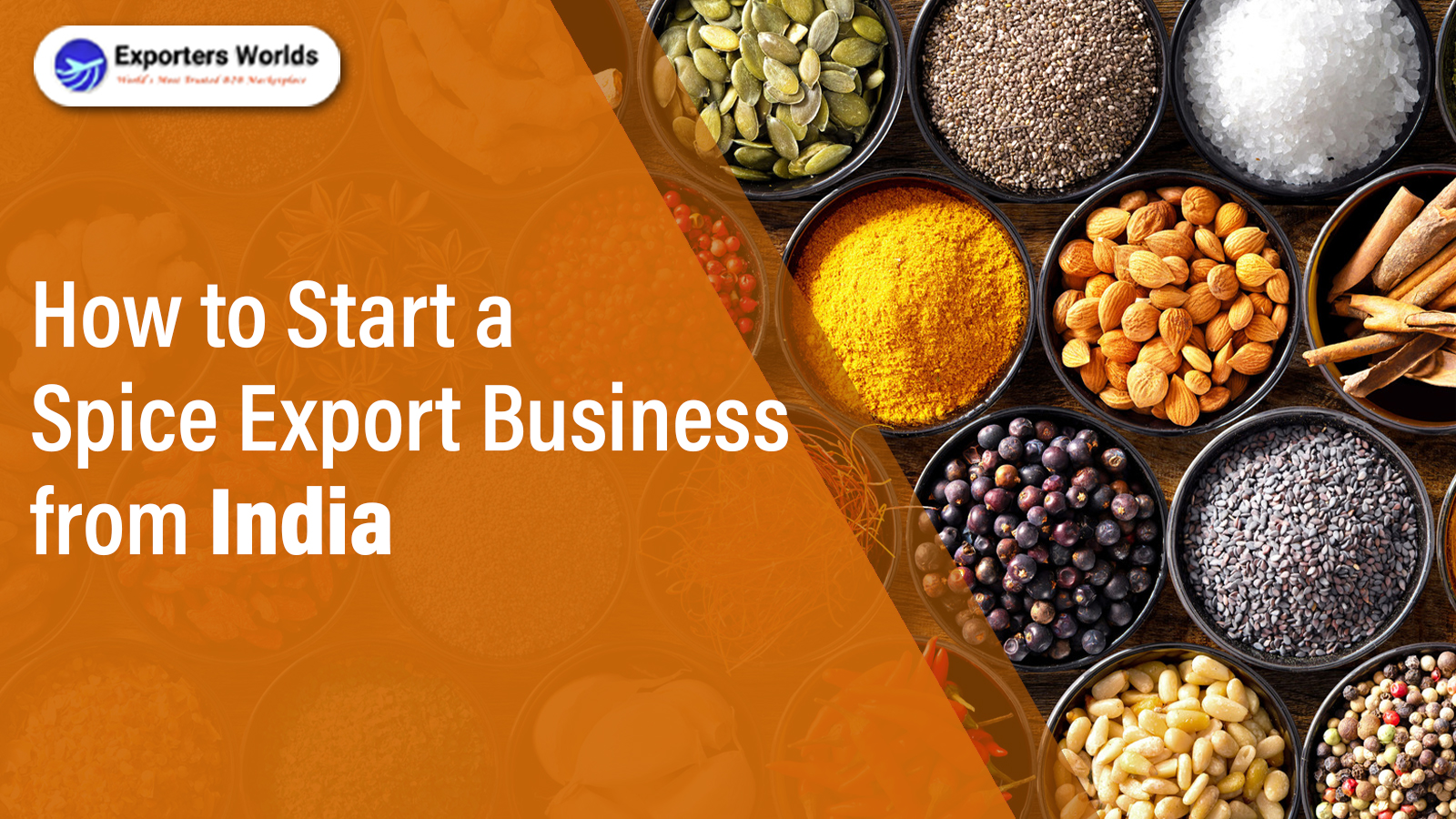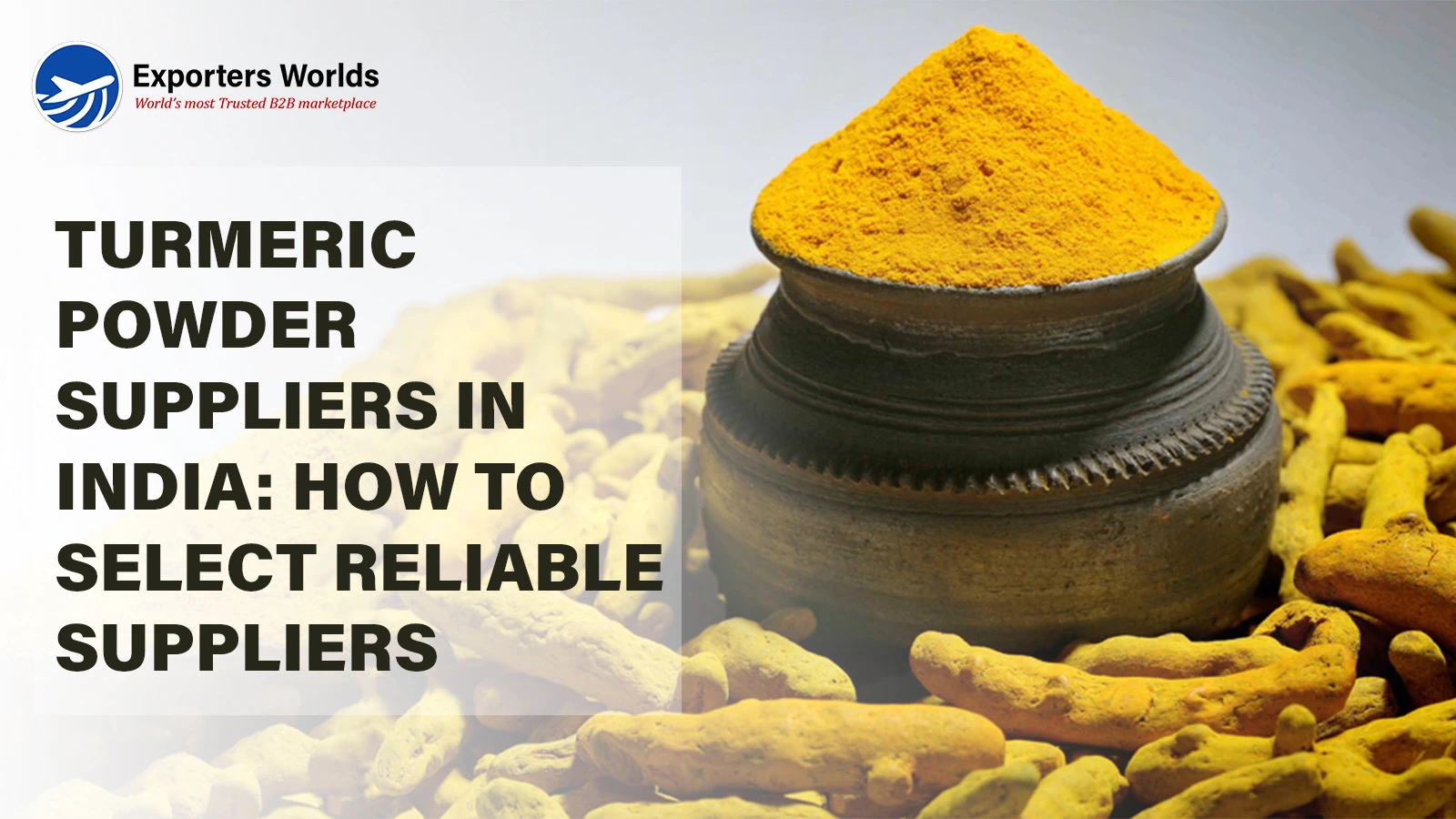How to Start a Spice Export Business from India: Step-by-Step Guide

Everyone Says India Is a Land of Spices—But Can You Actually Export Them Successfully?
Here’s the truth no one tells you—India is the largest exporter of spices in the world, accounting for nearly 20% of global spice exports by value and over 30% by volume, according to Spices Board India. Yet, despite this dominance, many aspiring entrepreneurs hesitate.
They assume the spice import export business is too technical, cost-heavy, or competitive to penetrate.
But what they overlook is this: every global dish with an Indian aroma is a demand signal waiting for your supply.
You’re not just tapping into trade—you’re anchoring your identity in a $20 billion global spice industry.
Global Spice Trade: You’re Not Selling Spices—You’re Selling Culture in Every Grain
When a trader from Kerala exports black pepper to Italy, he isn’t selling a spice—he’s selling India’s agricultural heritage in a jar.
India dominates more than 75% of the global spice market share, far ahead of top 10 spices exporting countries like China, Vietnam, Indonesia, and Turkey. In 2023 alone, India exported 1.43 million tonnes of spices valued at $3.95 billion, reaching over 180 countries.
Unlike competitors who export volume, India exports diversity and authenticity. This cultural depth is why countries like the U.S., UAE, U.K., Malaysia, and Germany consistently turn to India for their spice requirements.
Which Spices Should You Export? Here's What Global Buyers Are Secretly Craving
The list of spices exported from India exceeds 50 types, but not all are export-worthy for every market.
International trends show that turmeric exports from India surged by over 30% last year due to its global popularity as an anti-inflammatory. Cardamom, ginger, cumin, fennel, fenugreek, nutmeg, and mace are also increasingly in demand.
- Europe’s turmeric consumption is rising by 9.8% YoY, driven by nutraceutical trends.
- Japan is pushing imports of fenugreek and saffron for functional foods.
- The Middle East has a growing appetite for dry ginger and cumin for ethnic cuisines.
Spices importing countries aren’t just buying raw materials—they’re investing in wellness, flavor, and trust. Understanding this intent is how you position your offering correctly.
Don’t Sell Without Strategy: How to Choose the Right Market (And Avoid Expensive Mistakes)
India exports spices to more than 180 destinations, but entering the spice import export market without a market-fit strategy is like selling snow in Siberia.
Instead, conduct a reverse demand audit.
Germany’s spice importers focus on low-Scoville spices like turmeric and coriander due to cultural taste preferences and health trends. The UAE and Saudi Arabia, on the other hand, lean into heat-packed chili varieties.
Avoid the mistake of stock-pushing. Instead, become a demand-matching exporter.
Whether it’s turmeric in Canada or cardamom in Sweden, you must tailor your product to regional culinary patterns and regulatory standards.
Legal Maze or Simple Blueprint? Your Step-by-Step Compliance Checklist Made Human
Compliance is often perceived as a red tape jungle—but in reality, it’s your passport to global credibility.
Here's the compliance breakdown:
- IEC Code (Import Export Code) – Issued by DGFT, this is your gateway to international trade.
- APEDA Registration – Ensures your business aligns with India’s Agri Export Promotion framework.
- FSSAI License – Required for food-grade approval, especially for value-added spice products.
- GST and PAN Registration – For legal transactions and taxation alignment.
- Export Inspection Certificate – Mandatory for shipments to markets like the EU and U.S.
- Phytosanitary & lab reports – Proof of compliance with importing country regulations.
In short, registering under these frameworks is what turns a local trader into a globally recognized exporter.
If Your Spice Isn’t Trusted, It Won’t Travel: Why Quality Is Everything
Top spices exporting companies in India know one truth—quality wins contracts.
Global spice buyers don’t just request samples—they demand laboratory certifications, moisture content proofs, and pesticide-free declarations. A shipment with even minor residue levels can face Customs rejection, leading to demurrage, blacklisting, and reputational damage.
India’s exports of organic spices have grown by over 18% due to rising international demand for certified, residue-free produce. Thus, you need:
- HACCP and ISO 22000 certification
- USDA Organic, India Organic, or EU Organic tags
- State-of-the-art cleaning, grading, and packaging facilities
Your value is in your consistency, not just in your pricing.
Packaging Isn’t Just About Protection—It’s Your First Impression in Another Country
Let’s get real—no importer is going to touch your product if it doesn’t speak “compliance and class” at first glance.
International spice buyers now demand:
- Food-grade packaging with proper sealing
- Clear origin labeling, expiry details, and lot tracking
- Tamper-evident, recyclable, and export-compliant packaging
By following international barcoding and eco-packaging norms, you're not just protecting your product—you’re elevating your brand.
Packaging is your silent salesman—it speaks volumes even before a spice is tasted.
Want Buyers to Chase You? Here’s How B2B Portals Turned Indian Traders into Global Brands
You don’t need to travel the world to find buyers—you need to show up where they’re looking.
Modern B2B portal for spice exporters platforms have become the new global trade floors. Exporters who’ve listed verified business profiles on trusted portals have reported a 300% increase in qualified leads within 6 months.
How it works:
- List your products with proper specs and certifications.
- Respond to RFQs with precision and speed.
- Build trust through buyer ratings and digital presence.
The top 10 spices exporters in India have mastered this art—and it’s open to you too.
Don’t Price to Sell—Price to Grow: The Real Math Behind Export Profitability
A majority of new exporters fail not because their product isn’t good—but because their math is weak.
For instance, turmeric might cost ₹110/kg domestically, but once you add:
- Quality testing
- Moisture control
- Labor and packaging
- Freight and shipping
- Forex risk buffers
- GST refunds and APEDA overheads
The real price climbs. If you don’t price with these in mind, you’ll lose before you ship.
Whether you're entering the spices import in India space or exporting abroad, make pricing a strategic formula, not a race to the bottom.
Case Study: From a Small Shed in Rajasthan to Exporting to Europe—One Family’s Journey
Neeraj Verma from Kota had a modest dream—he wanted to export turmeric. With just 200 kg and a borrowed warehouse, he began his journey.
He started small but smart:
- Registered with APEDA
- Secured his IEC code
- Listed on a leading B2B portal for spice exporters
- Focused on premium turmeric processing and packaging
Today, Neeraj’s turmeric is stocked in organic stores across Belgium and France. His export revenue has doubled year-on-year, and he’s built long-term contracts with European buyers.
Neeraj didn’t chase volume—he chased value, and the world responded.
Final Thought: The World Is Waiting for What You’ve Been Sitting On All Along
India isn’t just the world’s spice bowl—it’s your entrepreneurial launchpad.
The opportunities are real. The demand is surging. The buyers are searching. But without strategic execution, this trillion-rupee opportunity remains untapped.
Exporters Worlds bridges that gap.
This premium B2B portal for spice exporters isn’t just a listing site—it’s a global branding ecosystem. From verified buyers and golden leads to compliance consulting and brand visibility, Exporters Worlds positions your product for international relevance and reliable conversions.
FAQ 1: Can I start a spice export business from India without owning a farm?
Absolutely. Owning a farm is not a prerequisite for entering the spice export market. What truly matters is your ability to source quality produce, adhere to global food safety standards, and build a credible brand around your operations. With India being the largest exporter of spices, many successful exporters work directly with contract farmers or aggregator networks. Focus on certification, packaging, and smart sourcing—you can leave the farming to the experts.
FAQ 2: Which are the best countries to export spices from India for new exporters?
If you’re just getting started, focus on spices importing countries with stable regulations and high consumption rates—such as the U.S., U.A.E., Germany, Canada, and Australia. These countries consistently import turmeric, cumin, coriander, and chili from India. More importantly, their demand for organic and clean-label products is rising fast, giving you an edge if you comply with those standards. Start with a niche product and scale as you build buyer trust.
FAQ 3: How can Exporters Worlds help me get verified spice buyers globally?
Exporters Worlds is more than just a B2B platform—it’s a complete export acceleration ecosystem. As a dedicated B2B portal for spice exporters, it connects you directly with verified global buyers, streamlines lead generation, and gives your brand a credible international presence. From product listing to profile building, their ecosystem is designed to turn first-time exporters into trusted global suppliers.




